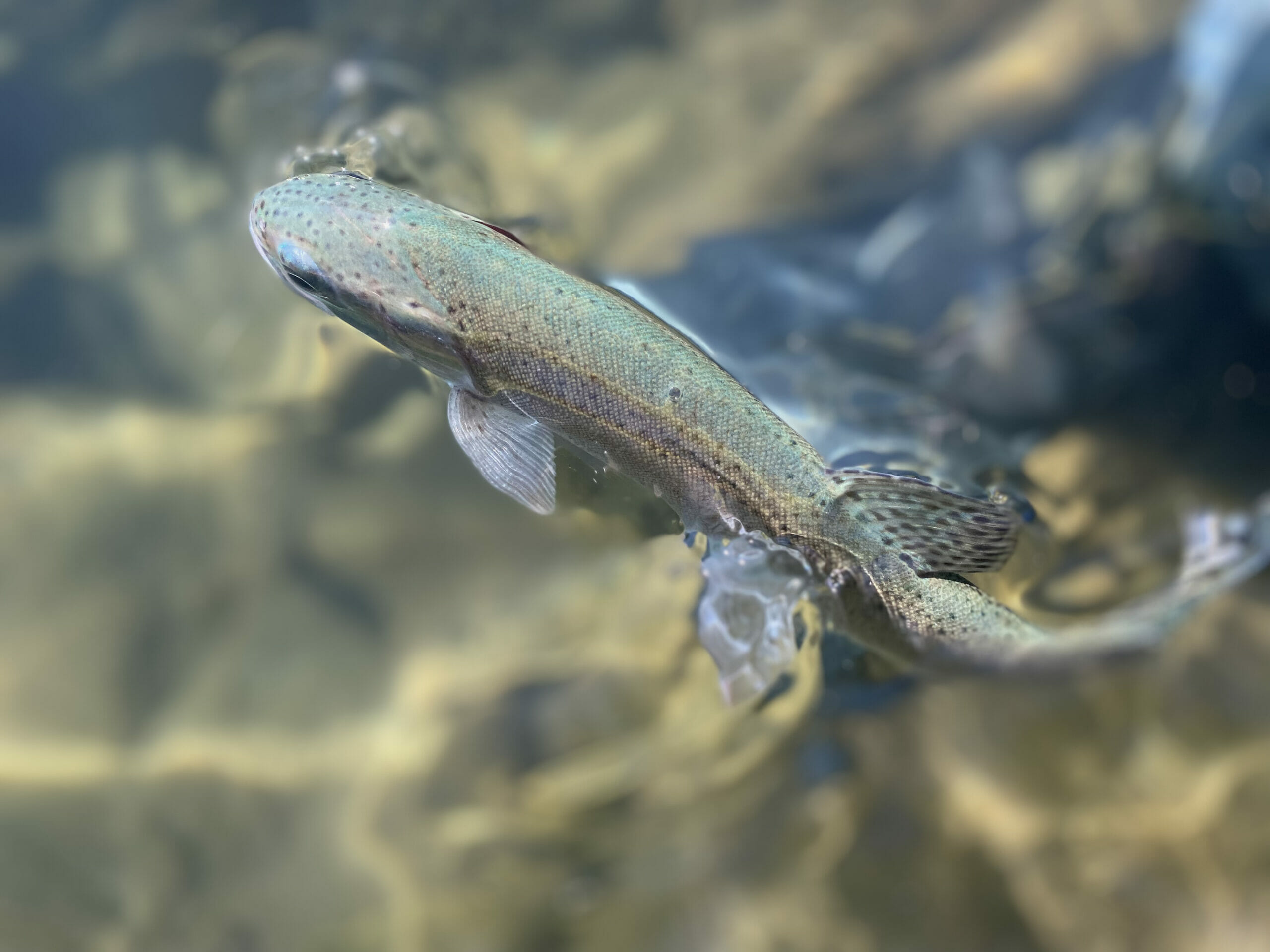Eagle Lake rainbow trout (Oncorhynchus mykiss aquilarum)
Species summary and status: Eagle Lake rainbow trout are a lake dwelling subspecies of rainbow trout found in Eagle Lake and its tributary streams on the east side of the Sierra Nevada in Lassen County, California. First described by J. O. Snyder in 1917, Eagle Lake rainbow trout were initially thought to be the hybrid offspring of Lahontan cutthroat and introduced rainbow trout. Recent genetic studies have shown the subspecies to be a distinct form of rainbow trout that colonized Eagle Lake through an ancient connection to the Feather River and the larger Sacramento River system.
Eagle Lake rainbow trout are uniquely adapted to the conditions in Eagle Lake, a 24,000 acre alkaline (pH 8 – 9) lake seasonally connected to its source tributaries only during the late spring snowmelt. Historically, long-lived and large adults – up to 11 years old and 24-inches long – ran up the largest tributaries to reproduce in the spring-fed headwater streams. Similar in appearance to coastal rainbow trout. The lateral line on an Eagle Lake rainbow has a pink band, fins with white edges, and irregularly-shaped spots are profuse. Their spots wane towards the belly, scales are finer than on coastal rainbow trout, and the snout is quite rounded. The predatory nature of life in a lake environment lends itself towards fish with large, squared-off tails for propulsion, large eyes, and increased body size. The average Eagle Lake rainbow trout reported in recent creels is about 18 inches in length and 2 pounds, although they have been known to reach upwards of 28 inches and 10 pounds.
By the 1950s, overfishing and habitat degradation from logging, grazing and road development caused population declines so severe that the California Department Department of Fish and Wildlife initiated a hatchery program from the few remaining fish. In 2012, the US Fish and Wildlife Service funded and built a fish ladder at the mouth of Pine Creek to allow for passage to historic spawning grounds. Combined with a trap-and-haul program by the California Department of Fish and Wildlife, after years of being completely sustained by the hatchery, young Eagle Lake rainbow trout have been recently discovered in the headwaters of Pine Creek, providing hope that natural populations can once again flourish. Nonetheless, the legacies of habitat degradation – loss of meadow habitats and altered hydrology exacerbated by declines in winter snowpack and drought – and the homogenization of the subspecies through hatchery fish still threaten the survival of Eagle Lake rainbow trout. Other threats include competition with introduced brook trout and natural factors that threaten any species with a limited distribution.
Historically, the majority of spawning occurred in Pine Creek, a tributary on the western shore of the lake. Due to extremely low lake levels and accompanying population decline observed in the 1930s and 1940s, resource managers feared the species may go extinct. Eggs and milt are collected, fertilized, and transported to state fish hatcheries where they are reared for nearly a year and a half until they are large enough to be replanted into Eagle Lake or other waters across the state. This artificial rearing process and back-stocking into Eagle Lake allows for continued survival of this species until natural spawning in Pine Creek can be reestablished.
Looking forward: The need for a fish weir currently prevents natural reproduction at self-sustaining levels. Since Eagle Lake rainbow trout have undergone more than 60 years of artificial selection in a hatchery setting, this may have long-term negative effects on their genetic integrity.
Additionally, Pine Creek flows intermittently into Eagle Lake and is dominated by non-native brook trout that were introduced in the 1940s. A top restoration goal is to remove non-native brook trout and reestablish natural spawning of Eagle Lake rainbow trout in Pine Creek. To help with this, the fish weir was modified in 2012 to allow spawning Eagle Lake rainbow trout some access to Pine Creek.
Eagle Lake rainbow trout face other threats, including habitat degradation from logging, grazing, water diversions, railroads, and roads. Climate change and low lake levels are a growing concern that reduces available habitat, increases water temperature, and changes the water chemistry.
California worked with numerous state, federal, and non-profit agencies to publish a conservation strategy for Eagle Lake rainbow trout. The primary focus is on restoration in the Pine Creek watershed to reestablish a wild, naturally-spawning population. Other ongoing actions include fencing off sections of the creek to exclude livestock, replacing impassible culverts, and removing structures that divert water from Pine Creek.
All data compiled from:



